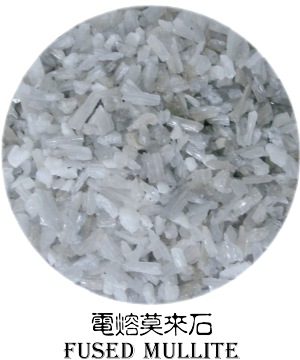
- Home
- About Us
- Products
- Product knowledge
-
News Center
News Center
- Contact Us






refers to mullite-based ceramics (\(3\text{Al}_2\text{O}_3 \cdot 2\text{SiO}_2\)) engineered for capacitor applications, particularly in multilayer ceramic capacitors (MLCCs). It is characterized by **low dielectric loss, high thermal stability, and excellent mechanical strength at elevated temperatures**, making it ideal for high-frequency and harsh-environment circuits.
1. Material Properties
Structure & Composition: Mullite crystallizes in an orthorhombic system with needle-like grains. Key properties include a high melting point (1910°C), low thermal expansion (\(5 \times 10^{-6}\)/K), and exceptional resistance to thermal shock and chemical corrosion.
Electrical Performance: Moderate dielectric constant (6-8), ultra-low loss tangent (\(\tan \delta < 0.0005\)) at MHz-GHz frequencies, and high insulation resistance (\(>10^{12} \ \Omega \cdot \text{cm}\)).
2. Manufacturing Process
Synthesis: High-purity \(\text{Al}_2\text{O}_3\) and \(\text{SiO}_2\) powders are mixed and reacted at 1250-1500°C. Additives like \(\text{BaO}\)/\(\text{CaO}\) reduce sintering temperatures and suppress glass phase formation.
Capacitor Fabrication: Tape-casting forms thin green sheets, screen-printed with electrode inks (e.g., Ag/Pd). Stacked layers are co-fired to build compact MLCCs.
3. Capacitor Applications
MLCCs: Dominant application, replacing tantalum/electrolytic capacitors in miniaturized devices (e.g., wearables, micro-instruments) due to small size and high reliability.
Critical Roles:
High-Frequency Circuits: Coupling/resonance components in RF systems (superior to Class I NPO capacitors in loss performance).
High-Temperature Modules: Stable performance in automotive/industrial electronics (e.g., engine control units).
IC Packaging: Substrates for high-speed computing, reducing signal delay by 17-20%.
4. Current Status & Challenges
Applications:
High-voltage insulators, coil bobbins, capacitor housings (corundum-mullite composites).
- Carbon-film resistor substrates (utilizing micro-porous surface).
- Limitations: Lower dielectric constant limits ultra-high capacitance; mechanical strength inferior to pure alumina ceramics.